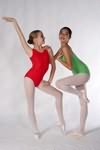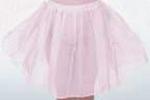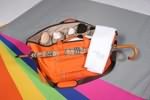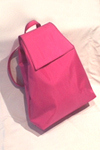| . |
 Company Rary, Compagnie Rary, Planete Sports, are just a few of the
Madagascan
dance
companies, Malagasy
dance schools, dancing organizations and dance wear suppliers
that that can be found in our comprehensive Directory of Madagascar
Dance
Companies. Company Rary, Compagnie Rary, Planete Sports, are just a few of the
Madagascan
dance
companies, Malagasy
dance schools, dancing organizations and dance wear suppliers
that that can be found in our comprehensive Directory of Madagascar
Dance
Companies.
Traditional Madagascan
dance
"Traditional Malagasy dance is imitative of
animals," he explained. "It has a cat-like energy; it's feline. We try to
borrow that energy.
Malagasy people like dancing and singing. From the North to the South, from
the East to the West, by the way of the high plains, Madagascar sings and
dances. Not only to modern rhythms, nor necessarily to world music. Like the
other countries in the world, Madagascar has its own culture and tradition.
This tradition is alive and kicking throughout the country in many guises.
Popular culture needs no electricity, stage or professional artists. In a
country so impregnated with the memory of its ancestors, songs and dances
remind us of the depth of our roots whilst at the same time entertaining the
community.
Like most cultural aspects of the country, Hira Gasy is totally unique to
Madagascar. It's a traditional form of Malagasy entertainment that is said
to have existed since 1789, and the rule of King Andrianampoinimerina. This
king provided his people with farming tools and techniques so they would be
able to feed themselves in times of famine or times of plenty; and mpikabary
(orators) went to perform for them (including singers and dancers) to
entertain them. The practice of Hira Gasy has been popular ever since to
give thanks to their kings.
Today, a Hira Gasy performance consists of several themes; each theme is
made up of five phases, like Sasitehaka (a prelude, usually about ten
minutes long). The main part of the Hira Gasy is the Renihira, which
introduces the main theme of the performance. The themes can be about
farming, social issues, weddings, or even trade. The songs linked to this
theme can last for an hour our more.
Today, many influences are adopted in the Hira Gasy, like the red uniforms
worn by the French during their colonization of the island. Hira Gasy is
sometimes staged during sacred ceremonies; these include Famadihana (the
exhumation of the dead for reburial), the circumcision ceremony for one to
seven year olds and other important events.
Sometimes performances are also put on for tourists although these are often
only for tour groups. For locals, Hira Gasy is done for public entertainment
too, and in small towns and villages you may stumble across a traditional
performance.
| Featured
Madagascan Dance Company |
Company
Rary, Compagnie Rary
Based in Antananarivo, Madagascar’s capital city since 1998,
Compagnie Rary includes 10 permanent members: seven dancers, two
musicians, and a dancer/choreographer Ariry Andriamoratsiresy.
The company manages to ply its trade thanks to the school of
dance, which they manage in Antananarivo. The school provides
programs for 70 and 80 pupils, including children and adults.
Compagnie Rary tours regularly: France, Spain; Germany (Berlin,
Cologne, Düsseldorf), Portugal, Denmark (Copenhagen), The
Netherlands (Amsterdam), Austria (Vienna); Italy, France (Lille)
for school workshops and performance programs. The company has
also toured throughout West and East Africa.
Compagnie Rary has also gained critical acclaim. In 2001, they
won second place at Sanga II: African and Indian Ocean
Choreographic Competition, a pan-African dance festival held in
Madagascar. In 2002, the company received the Prix RFI Danse, an
award presented by Radio France Internationale to promote
African creativity, especially contemporary dance, at the
international level.
Ariry Andriamoratsiresy (choreographer) was inspired to create
“Mpirahalahy Miania [Several Make One]” by a Malagasy proverb
which literally means “Two brothers go hunting,” a variation on
the American saying “Two heads are better than one.” The proverb
suggests that in order to be successful, people must remain
united.
In the show, this idea of unity is put to dance as people go
hunting but stick together. Divided into four parts, the work is
staged around a wooden structure that represents a door, a bed,
a double-decker bus and, finally, a boat. The structure
represents today's world on an organizational and spiritual
level with its cubic, square and rectangular forms. The
difficulty lies in adopting the human being's roundness. In each
part of the show, the movements change, adapting to the
rectangular structure, and following the live music played by
Linda Volahasiniaina who sits on a corner of the stage. The
movement of the dance combines traditional Malagasy dance, which
is imitative of animals and animal life, with Indian and global
dance.
If you would like your Madagascar
Dance Company, Dance Organization, Dance School featured here
then please email
bangkokcompanies@gmail.com |
There are many fine dance schools in
Madagascar. I know I am in contact with them as we
supply a range of high quality dancewear products like leotards, dance
pants, dance dresses and other dancing apparel.
Bangkok Companies supplies an amazing range
of dancewear from Thailand. I have looked at these dance garments and dance
accessories in detail. There is only one word to describe them Superb.
For more details click on the pictures or send an email to
bangkokcompanies@gmail.com We
regret at this time we can only satisfy Madagascar
wholesale dancewear requests.
"Dancewear designed by
dancers for dancers"
| Dance
Dresses |
Kids Leotards |
Adult
Leotards |
Dance Bras |
|
 |
 |
 |
 |
|
| |
Dance Pants |
Tutu's |
Dance
Shorts |
|
 |
 |
 |
 |
|
| Dancewear |
Dancewear Organizers |
Dance Bags |
Dance
Backpacks |
|
 |
 |
 |
 |
|
Bangkok Companies is a full service
product sourcing company in Thailand. For All your
dancewear needs please email
bangkokcompanies@gmail.com with your requests.
Dance Schools in
Madagascar, Dancewear Suppliers, Dancing Organizations
Commission Nationale pour l''UNESCO
11 rue Naka Rabemanantsoa-Behoririka, B.P. 331
MG-101 Antananarivo Madagascar
Tel. (261.20)222.17.61; Fax (261.20)222.84.96
Organization
--------------------------------------------------------------------------------
Compagnie Rary
Logt 41 Ambohipo MG-101 Antananarivo Madagascar
Tel. & Fax 00 261 20 22 213 75 / 236 47; 00 261 32 07 731 34
http://movementrevolutionafrica.com/rary.html
Company
--------------------------------------------------------------------------------
Mireille Rakotomalala
17 rue Dr. Villette-Isoraka P.B. 564
MG-101 Antananarivo Madagascar
Tel. (261)2023, 35206, 28218
Researcher, folk dances
--------------------------------------------------------------------------------
Alliance Francaise de Madagascar
BP 916 MG-101 Antananarivo Malagasy Republic
+261202223263; fax +261202222504
www.alliancefr.mg
--------------------------------------------------------------------------------
Madagascar National Commission for UNESCO
(Commission Nationale Malgache pour l'UNESCO)
B.P. 331; 11 rue Naka Rabemanantsoa-Behoririka
MG-101 Antananarivo Malagasy Republic
261-20) 222 17 61; fax (261-20) 222 84 96
http://www.unesco.org/comnat/madagascar
National organization
--------------------------------------------------------------------------------
Planete Sports
Im. Grand Ciel, Rt des Hydrocarbures, Ankorodrano
MG-101 Antananarivo Malagasy Republic
www.sport-madagascar.com
School, Tous les rythmes et danses du mondes hip hop, funk, rock. Permet de
développer le sens de la coordination et du rythme.
--------------------------------------------------------------------------------
Vonihaingo-Sylvia Rakotomdrasoa
Bloc N?4 Lot 40 Manjarison
MG-401 Mahajanga Malagasy Republic
Madagascar's Deaf Youths Excel in
Dance Program
Dance was introduced to the young deaf people of the AKAMA by a
young woman whose studies in Physical Education culminated in a
thesis on the movement expression of deaf people. Under the
supervision of the Lutheran church, the AKAMA is a school for
children and youth with hearing impairments. The classes follow two
tracks:
The "formal education" track:
Primary classes, from 1 st to 5 th grades
Secondary classes, from 6 th to 9 th grades
The "Professional Training" track:
Carpentry
Sewing, embroidery
Computer Science
It all began more than 10 years ago...
It all began in 1993 when Mirana, the young woman in question, was
hired as a volunteer physical education teacher at the AKAMA. Using
the elements of her thesis, she tried to teach to the young deaf
people not only gymnastics, but also modern dance. She met this
great challenge with patience and creativity, and soon came the time
for the group's first public appearance.
At first, the audience was made up only of the Lutheran parishioners
attending a religious feast. A mixture of surprise and admiration
was apparent on their faces as they saw the young deaf dancers
moving in harmony with the rhythm of the music. Even Mirana was
stupefied, she later confessed, for the results of their work
surpassed her expectations.
The success of the first show spread so fast that the group was soon
asked by the City of Tananarivo School District to perform at the
various school fairs such as All Schools' Day, Back To School Day,
etc. The invitations have since kept coming, and the members of the
group are more and more motivated to give it their very best. As for
Mirana, she has consistently added an innovative touch to their
style.
During the celebration of independence day last June 26 th , the
group danced in front of an audience of over one thousand at the
great stadium of Mahamasina, and everyone was amazed. You could hear
people whispering: "This is incredible! How is it that the young
deaf people manage to dance when they don't hear the music? Are they
really deaf or are they pretending?..." Sadly, this confirms the
biases that handicapped people confront on a daily basis.
Malagasy group visits Switzerland
The group's reputation has spread beyond Madagascar's borders and
has conquered Switzerland. In 2003, the group - still directed by
Mirana - performed 40 shows on a tour of several cities in
Switzerland. It was a success. The young deaf people of Switzerland
learned a lot from young deaf Malagasy.
Mirana, with the help of their new Swiss friends, now directs a
program called "Tanana Mirana (Delighted Hands)" which works towards
the social, cultural, and professional integration of young deaf
people. The program offers many activities: drawing, cutting and
sewing, embroidery, sign language classes, French, English, family
planning, and of course dance. About 70 young deaf people currently
use the program.
According to Mirana, the program's goal is not only to help spread
dance among young deaf people, but also to help launch their other
talents, such as drawing and embroidery. When I visited the program,
I saw that many drawings made by the young deaf people graced the
walls of the various rooms. Seeing these works of art immediately
made me want to support their creation.
It is important to note that Madagascar is one of the few countries
with a deaf dance group. Judging from the response to the events
that the deaf dancers participated in, I dare say that they carry
with them the pride of the nation, thus proving that they are indeed
citizens in full.
By
Fela Razafinjato fela.csm@netclub.mg |
|



 Company Rary, Compagnie Rary, Planete Sports, are just a few of the
Madagascan
dance
companies, Malagasy
dance schools, dancing organizations and dance wear suppliers
that that can be found in our comprehensive Directory of Madagascar
Dance
Companies.
Company Rary, Compagnie Rary, Planete Sports, are just a few of the
Madagascan
dance
companies, Malagasy
dance schools, dancing organizations and dance wear suppliers
that that can be found in our comprehensive Directory of Madagascar
Dance
Companies.










